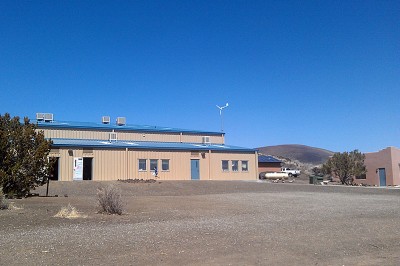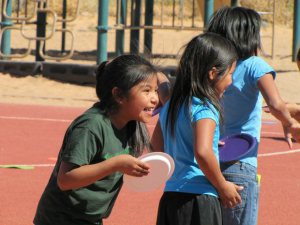Native American Students and the Common Core

Star Charter School. Photo by Sarah Butrymowicz, The Hechinger Report.
Hi, everyone! Diane is away and will be back next week to finish her series on writing and the Common Core. In the meantime, I want to follow up on her most recent blog about the intersection of culture with the Common Core, particularly as it relates to Native American students.
A recent article published in The Hechinger Report by Sarah Butrymowicz takes an in-depth look at how schools serving Diné (Navajo) students are responding to the Common Core State Standards, adopted by the Bureau of Indian Education (BIE) for use in its schools nationwide.
According to Butrymowicz, the decision to adopt the Common Core was controversial as Diné leaders discussed whether there would be room for information about Diné culture and history within the Common Core, especially as the Diné Nation began creating its own key standards, which focus on “culture, language, history, governance, and character.” Many officials at the BIE and at the state level, on the other hand, see the Common Core as an opportunity to help close the achievement gap among Native students and their non-Native peers.
These conversations are not new to Native communities, who have long been juggling federal mandates with cultural priorities in tribal schools. Butrymowicz indicates that limited research shows a small yet potentially positive effect when incorporating Native culture into the curriculum, noting that “one researcher found that Alaska Native students who learned about geometry through a lesson on building a traditional salmon drying rack did better on math tests than those who learned from the regular curriculum.”
The teachers at one school that Butrymowicz visited, the solar-powered Star Charter School in Piñon, Arizona, also proactively look for ways to include Diné culture throughout and across the curriculum, from a science lesson based on the Diné “wheel of life” to a hands-on Farm-to-School initiative where students grow crops and learn about Native American food. Teacher Thomas Tomas observes that, “In every lesson we possibly can, we do cultural infusion.” And for many of those educators, who say their students are often holistic thinkers, they see the Common Core as a potentially good match for their students and an opportunity for in-depth, cross-curricular lessons such as the ones they have long been using with their students.
Yet in spite of their cautious optimism, they shared their concerns with Butrymowicz about whether Common Core assessments will capture their students’ strengths, experiences, and abilities, particularly if more time is spent on test preparation in the classroom – a concern heard from educators around the country. In addition, the isolated and remote nature of many Native communities means that students may have trouble relating to seemingly routine activities common to other children. Teachers pointed to writing prompts about going to the beach or making cookies, for example, as challenging for their students.

A student enjoys Field Day. Photo by Laura Morales, Fronteras.
An additional complicating factor in this discussion is the impact of federal sequestration on Indian Country schools. According to a story from Laurel Morales at Fronteras, sequestration for schools serving large Native communities will mean larger class sizes, delayed building maintenance, and fewer buses for transporting kids as rough, off-road terrain wears out the buses more quickly. It may be difficult to focus on implementing the new set of standards effectively when so many other issues are vying for adults’ attention.
Recommended Resources
For resources focused on Native American and Alaska Native heritage and experiences, take a look at our themed booklists for children and young adults, which include a number of books about the Diné nation.
Your Thoughts
What about your students? Do you see the Common Core as an opportunity for in-depth learning that will better engage them? Do you think there will be opportunities to infuse culturally relevant lessons and activities into the standards for all students? We’d love to hear from you!
Photo credit: Sarah Butrymowicz, The Hechinger Report
The Star School, a solar- and wind-powered charter elementary school near the southwest corner of Diné Nation, will have to balance new state standards with teaching Native culture and values.








Add new comment